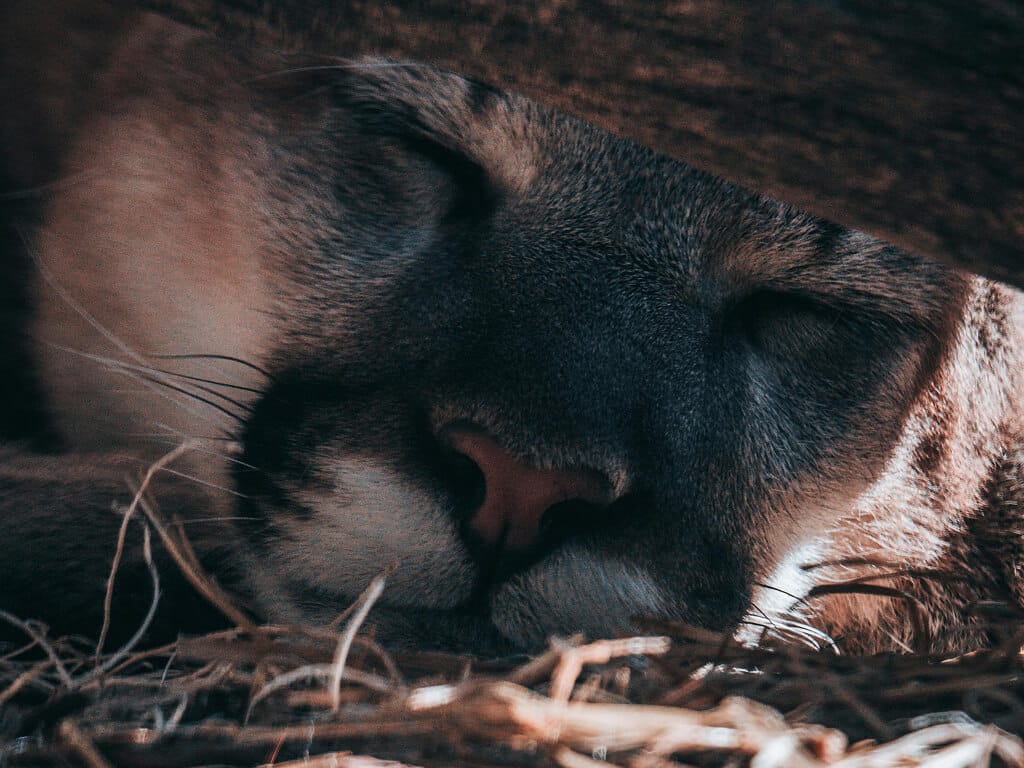Preserving the Wild: A Mountain Lion’s Legacy Lives on State University
A male mountain lion, recently killed in Hot Spring County, will be preserved at Henderson State University, offering Arkansas students a rare opportunity to study up close a species that had nearly disappeared from the state.

Mountain lions are a rare presence in Arkansas. Though more commonly found in western states, their numbers in the eastern United States remain extremely low due to historic hunting and widespread habitat loss. In Arkansas, the species was nearly wiped out by the 1920s, and the eastern cougar, the native subspecies once roaming the region, was officially declared extinct in 1946.
For decades, Arkansas saw no confirmed sightings of mountain lions, though occasional reports did surface. Wildlife officials note that the state has no established breeding population, but individual animals may sometimes wander in from neighboring regions. Public attention surged last week when a cougar was hit and killed by a vehicle on October 9 in Hot Spring County. This male cat represents only the third confirmed mountain lion death in Arkansas in nearly 50 years, and which moved to nearby state university, providing a rare chance for young Arkansans to see and learn about a species most have never encountered in the wild.
Reappearance of a Mountain Lion
Historically, Arkansas hunted mountain lions heavily to protect livestock and pets, particularly across the state’s vast farms and cattle pastures. Combined with habitat loss, this hunting drove the species out of the state, and for a period, no sightings were reported.
Although there is no confirmed evidence of a breeding population returning, the Arkansas Game and Fish Commission (AGFC) has documented 43 mountain lion sightings in the state since 2010. Many of these likely involved solitary animals passing through rather than establishing a permanent population. To date, no sightings have confirmed a female or provided evidence of cubs, indicating that mountain lions have not truly returned as a resident species.
On Wednesday around 10 p.m., a motorist struck and killed a mountain lion on Arkansas Highway 84 near Exit 91 of Interstate 30 in Hot Spring County. This marks the first confirmed mountain lion death in the wild in Arkansas since February 2024.
Earlier, in February 2024, a U.S. Forest Service employee discovered a dead mountain lion in the Sylamore Wildlife Management Area in Stone County. The 118-pound animal appeared older, with an emaciated body and severely worn, broken, and missing teeth.
A similar case occurred in November 2014 in Bradley County, when a deer hunter shot a 148-pound male mountain lion east of Hermitage. DNA testing suggested it was likely the same individual previously sighted in Marion County that September.
“Male mountain lions are known to roam, sometimes crossing multiple states,” said Spencer Daniels, AGFC Large Carnivore Program coordinator. Experts note that without evidence of a female population, these animals are likely transient visitors rather than permanent residents.
Preserving the Lion for Education
As modern generations in Arkansas have never seen a puma in person, authorities decided to preserve the recently killed mountain lion for educational purposes. After performing a necropsy, the Arkansas Game and Fish Commission sent the animal to Henderson State University, where it will become part of a curated collection.
“It should be here forever, that’s the idea of a curated collection, so anyone who would like to study it can,” said Dr. Renn Tumlison, a biology professor at Henderson State.
Given the rarity of the occurrence, Henderson State eagerly welcomed the opportunity to bring the mountain lion to Arkadelphia. “Opportunities like this hardly ever happen, so it’s really special to have,” Tumlison said. Students were able to observe the animal up close, offering a learning experience far beyond what photographs can provide. “When students look at it, it’s not the same as a picture. When you can touch it, feel it, and see its massive size, it really gives a sense of scale that photos can’t convey,” he added.
The close study of the mountain lion offers an invaluable understanding of its three-dimensional anatomy. “In zoology, we often study 2D images, but you don’t truly appreciate it until you can examine it in 3D,” Tumlison explained.
The university is carefully preparing the specimen, which will remain on campus permanently. “We’ve skinned the animal, removed the meat from the bones, and are in the process of cleaning the bones and tanning the hide. Once completed, it will be curated in our collection,” Tumlison said.
Conservation Efforts in Arkansas
Mountain lions once played an important role in maintaining Arkansas’s natural ecosystem, but despite posing little actual danger to people, they were heavily targeted to protect farm animals. This was not unique to Arkansas - much of the eastern United States followed a similar pattern of eradication. Today, cougar conservation is gaining momentum in several regions of the country, yet Arkansas still has comparatively limited efforts in place.
Within the state, preservation work mainly involves verifying sightings and safeguarding potential habitats, with oversight from the Arkansas Game and Fish Commission. There is no established breeding program, and mountain lions are not officially recognized as a protected species in Arkansas. While they are not considered a high conservation priority, public interest in their possible return is slowly growing.
Estimates referenced by A-Z Animals suggest that around 30 mountain lions may currently be present in Arkansas, pointing to a small but potentially expanding population. As new sightings continue to emerge, experts hope the species can regain a lasting presence and avoid vanishing from the Arkansas landscape once again.





